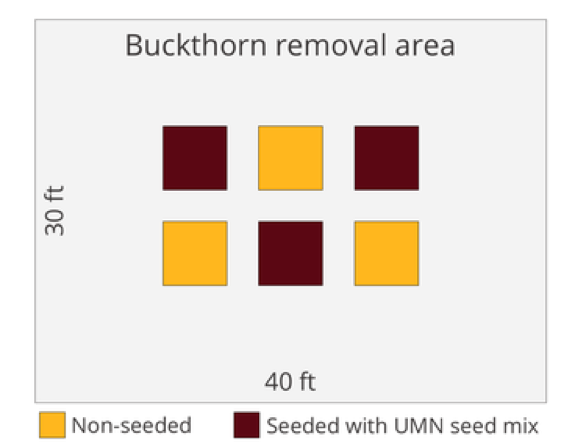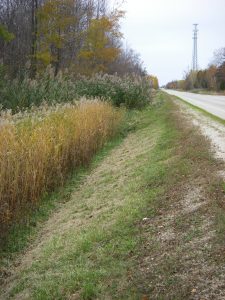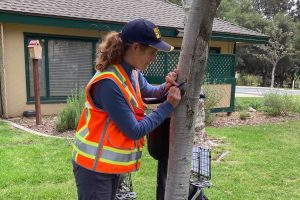Common buckthorn (Rhamnus cathartica) is one of Minnesota’s most notorious invasive plant species. Can native plants keep buckthorn at bay?
The resources needed to remove buckthorn just once can be intense. What’s worse is that it regrows easily, so it needs to be removed over and over. That leads many private landowners to retreat in defeat. Cover it Up!, a project of the University of Minnesota – Twin Cities Department of Forest Resources, is studying how to slow down or stop this vicious cycle using native plant cover.
Cover it Up! is a Citizen Science Project. Landowners in and around the Twin Cities volunteer to conduct the following experiment in their wooded areas:
- Buckthorn will be removed from a 30 x 40 wooded area in fall 2019.
- In the spring of 2020, six 5 x 5 plots will be marked off. Half of them will be planted with a seed mixture of grasses, sedges, wildflowers, shrubs and trees.
- During the summers of 2020 and 2022, the plots will be measured for the ability to reduce buckthorn regrowth.
For more information on Cover It Up! visit https://coveritup.umn.edu/ or https://mitppc.umn.edu/project/cover-it-using-plants-control-buckthorn




